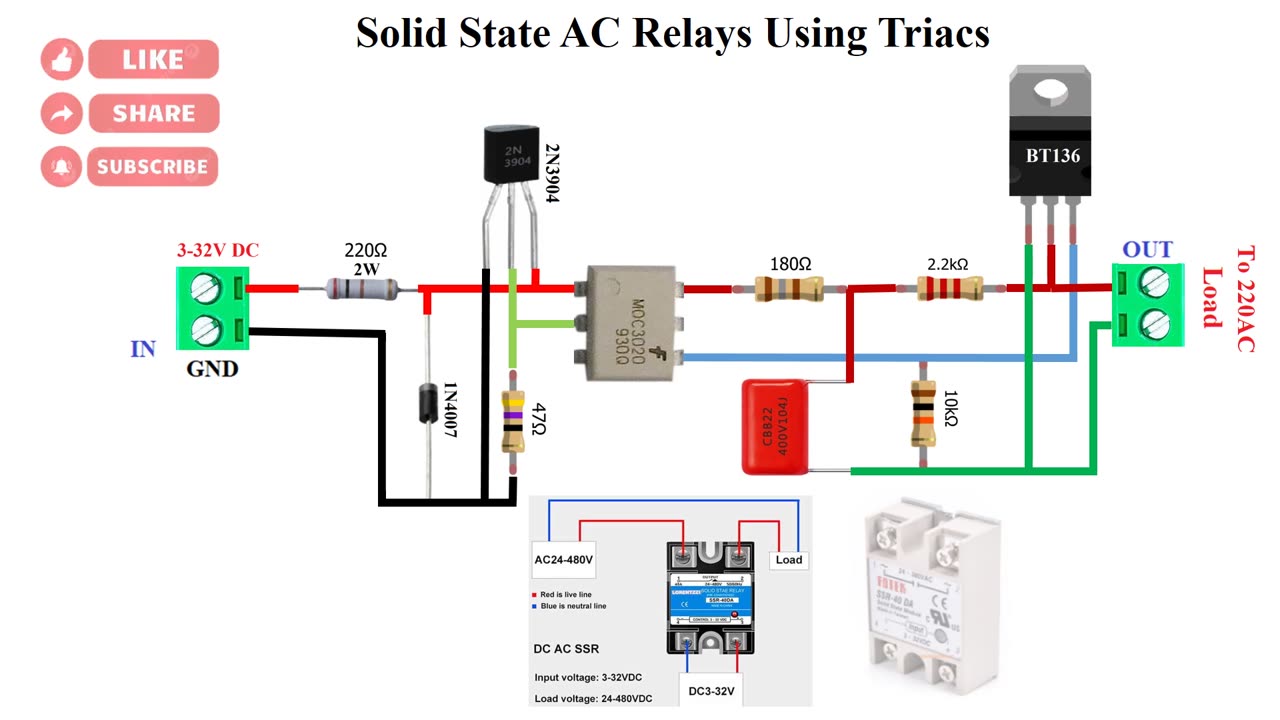Premium Only Content

Solid State AC Relays Using Triacs
Hey everyone, and welcome back to the channel! Today, we're diving into the world of Solid State Relays, or SSRs for short. These little devices are really interesting because they offer a modern alternative to traditional electromagnetic relays – those clicky mechanical switches you might be familiar with.
Now, traditional relays, while useful, have some limitations. They can be a bit slow, wear out over time due to the moving parts, and even generate electrical noise. That's where SSRs come in. They're designed to overcome these issues.
Think of an SSR as an electronic switch. Instead of relying on physical contacts opening and closing, they use semiconductor technology to control the flow of electricity. This means they're much faster, more reliable, and operate silently. Pretty cool, right?
You'll find SSRs designed for both DC (direct current) and AC (alternating current) circuits, making them versatile for a wide range of applications.
And here's another key difference: SSRs come in two main flavors, depending on how they switch the current: zero-crossing and random-crossing. We'll explore the specifics of those in a future video, so make sure you're subscribed so you don't miss it!
So, in a nutshell, SSRs are a solid-state replacement for mechanical relays, offering improved speed, reliability, and lifespan. They're becoming increasingly popular in various industries, and understanding how they work is a valuable skill.
Let me know in the comments if you've ever used SSRs before or if you have any questions. Thanks for watching!
-
 DVR
DVR
Benny Johnson
2 hours ago🚨BOMBSHELL: New Trump Assassination Plot Revealed! Assassin Would 'Bomb' Trump, Escape to UKRAINE
28.7K33 -
 LIVE
LIVE
Side Scrollers Podcast
2 hours agoBlabs’ Day is RUINED | Side Scrollers
298 watching -
 LIVE
LIVE
The Big Mig™
1 hour agoGlobal Finance Forum From Bullion To Borders We Cover It All
4,370 watching -
 LIVE
LIVE
The Tom Renz Show
49 minutes agoBREAKING: White House Acknowledges COVID Is From a Lab!
232 watching -
 LIVE
LIVE
Flyover Conservatives
12 hours agoAmerica’s Turning Point: Is a New Wave of Heroes Rising? - Phil Williams; 5 Tips to Get Unstuck and Explode Your Business - Clay Clark | FOC Show
463 watching -
 2:10:00
2:10:00
Badlands Media
12 hours agoBadlands Daily: April 18, 2025 – Teleportation Tech, Time-Space War Games, and Tish James Caught in Her Own Trap
86.1K9 -
 59:43
59:43
Steven Crowder
4 hours ago🔴 Good Friday: A Day for Mourning or A Day for Celebration?
161K147 -
 LIVE
LIVE
LFA TV
16 hours agoTRUMP SPEAKING LIVE! - ALL DAY LIVE STREAM 4/18/25
5,932 watching -
 DVR
DVR
IsaiahLCarter
16 hours ago $0.21 earnedApostate Radio #010: Jacob Urovsky Professor of Disaffection, Joshua Slocum
7.09K -
 LIVE
LIVE
The Shannon Joy Show
3 hours ago🔥🔥Debt And Slavery … How To Stay FREE Amidst The Coming Plunder & Economic Crisis. LIVE With America’s Friendliest Billionaire Bonk Da Carnivore🔥🔥
252 watching